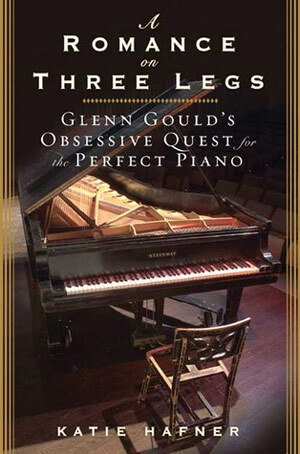Marc Abrahams's Blog, page 45
November 23, 2022
Bankman tops nominative determinism; Non-newtonian milk; Manly pursuit
This week’s Feedback column (that I write) in New Scientist magazine has three segments. Here’s how they begin:
What’s in a name?—This month, Sam Bankman-Fried returned to the head of the nominative determinism parade of tech entrepreneurs, following his portentous appearance earlier in the year.….Non-Newtonian milk—Research is “the mother’s milk of feeding [and] fueling the economy”, according to testimony that was given at a 1997 hearing conducted by a US House of Representatives’ subcommittee. Politicians who wish to extend that metaphor can now, 25 years later, turn to a study published in the Journal of Biomechanics.….A manly pursuit—Menelaos Apostolou and Chistoforos Christoforou at the University of Nicosia in Cyprus looked at the singularity in some lives. Their new study is called “What makes single life attractive: An explorative examination of the advantages of singlehood”. It advises that “low scorers in mating performance found the identified advantages more important than high scorers”….November 21, 2022
Heart-Synced Mutual Attraction: 2022 Ig Informal Lecture

The Ig Nobel Prizes honor achievements that make people LAUGH, then THINK.
In the Ig Informal Lectures, some days after the ceremony, the new Ig Nobel Prize winners attempt to explain what they did, and why they did it. We are releasing these lectures one at a time.
The 2022 Ig Nobel Prize for Applied Cardiology was awarded to Eliska Prochazkova, Elio Sjak-Shie, Friederike Behrens, Daniel Lindh, and Mariska Kret, for seeking and finding evidence that when new romantic partners meet for the first time, and feel attracted to each other, their heart rates synchronize.
REFERENCE: “Physiological Synchrony is Associated with Attraction in a Blind Date Setting,” Eliska Prochazkova, Elio Sjak-Shie, Friederike Behrens, Daniel Lindh, and Mariska E. Kret, Nature Human Behaviour, vol. 6, no. 2, 2022, pp. 269-278.Blink-Free Photos and Woodpecker Non-Headaches [2 videos]
Encyclopedia Sciplayer has made two more videos, each about a different Ig Nobel Prize winner:
“Why Don’t Woodpeckers Get a Headache”:
“How to take a blink-free photo”:
November 18, 2022
Morbid Curiosity, Meta, and Punishment for Cursing
This week’s Feedback column (that I write) in New Scientist magazine has three segments. Here’s how they begin:
Curiously Meta—Coltan Scrivner’s curiosity about morbid curiosity is ushering him to higher and higher realms. He wrote his PhD thesis on the subject and joined the Recreational Fear Lab at Aarhus University, Denmark. Scrivner defines morbid curiosity as “a motivation to seek out information about dangerous phenomena”.….What the $%!? —“Researchers do not know how parents respond to children’s cursing or what effect parents’ responses have on children later in life.” Morbid curiosity, and maybe other flavours of curiosity, drew Timothy Jay, Krista King and Tim Duncan to write those words in their study called “Memories of punishment for cursing”.…November 16, 2022
The Tallest-Building Game
Economically speaking, should one look up to the businesspeople who build skyscrapers, or look down at them? Calculation is involved in reaching the answer obtained in this study:
“A Game-Theoretic Analysis of Skyscrapers,” Robert W. Helsley and William C. Strange, Journal of Urban Economics, vol. 64, no. 1, July 2008, pp. 49-64. The authors explain:
“The bottom line of all of this is that skyscraper construction sometimes takes place in the context of a contest between rival builders. This paper carries out a game-theoretic analysis of such a skyscraper contest. A builder is assumed to have a payoff function that depends in part on profits, as derived from a standard model of urban spatial structure. Builder payoff also depends on whether the builder has developed the tallest structure in his or her market. The paper considers both simultaneous- and sequential-move skyscraper games. The main conclusion that emerges from the analysis is that the contest results in dissipation, with the value of the tallest-building prize at least partially lost in the poor economics of skyscrapers.”
November 14, 2022
Ig Nobel Prize-related events in November
Two Ig-related events this month. The Heinz Oberhummer award, for “outstanding science communication”, will be given to the Ig Nobel Prizes on Nov 24, in Vienna, Austria (and webcast). On Nov 25, Science Friday will broadcast a specially edited version of the 2022 Ig Nobel Prize ceremony.
November 11, 2022
Throwing Physics and Math(s) at the Mona Lisa
This week’s Feedback column (that I write) in New Scientist magazine has two segments. Here’s how they begin:
Physics vs Mona Lisa — The wood and smile of the Mona Lisa fascinate scientists. Not wooden smile. Wood and smile. A new study in the Journal of Cultural Heritage reveals how researchers have spent 18 years exploring the wooden panel on which Leonardo da Vinci painted the Mona Lisa.….Maths vs Mona Lisa — Some scientists feel that maths, not physics, is the heaviest of assault weapons. They deploy it when handed some problem that has defied solution and maybe made people cry. The Mona Lisa brings many such problems. Alessia Amelio at the University of Calabria, Italy, went on a mental adventure ride, collecting some of the mathematical methods that people have taken to war against the Mona Lisa‘s mystery….….
November 9, 2022
Watch Glenn Gould Savage Mozart
In this 1968 video, pianist Glenn Gould plays bits of Wolfgang Mozart‘s musical compositions, and explains why he, Gould, feels that Mozart was a hack composer.
Here’s a partial transcript of what Gould says:
“That example came from Mozart’s piano concerto in C minor, one of the last works he produced in that form, one of only two in a minor key, and perhaps for both those program-noteworthy reasons a work that’s had a rather better press than it deserves, I think, despite its gently swooning melodies its meticulously balanced cadences, despite its stable and architecturally unexceptional form. I’m going to submit it as a good example of why I think Mozart especially in his later years was not a very good ‘composer’, but the italics are squarely on that word composer because Mozart was unquestionably a very great musician — and I’m not being coy when I try to foster that distinction. By the evidence of his contemporaries he was a superlative performer and an improviser of note, by the evidence of our own eyes and ears a resourceful craftsman in the theater, and in all the familiar musical forms of his day an exhilaratingly dependable artist who could knock out a divertamento the way an accounts executive dispatches an interoffice memo, But in a way, that’s his problem: too many of his works sound like inter-office memos. They’re pertinent. They’re often blessed with an engaging sense of humor. They sometimes provide a concise resume of the main points their author wants to make. But like inter-office memos they can jump from point to point or, on the other hand, dwell at unconscionable length upon a particular point which details the executive’s pet peeve, a point not necessarily germane to the corporate interest, and in that example I think Mozart was dictating just such a memo. He held that series of rather undistinctive and virtually indistinguishable E-flat major themes together with listless scale runs, unpredictable chord changes… like an executive holding forth upon the ramifications of a subject that no one in the front office was much concerned with anyway. ‘Yeah, well, uh, Harry, as I see it it’s got this thing about replacing the water cooler. Let’s just file it and forget it.’ “
More detail, including a fuller transcript of Gould’s rant, appears on the GlennGould.tv web site.
To gain some entertaining insights on Glenn Gould, consider reading the delight-filled book A Romance on Three Legs, by Katie Hafner. (Thanks to Alison Brown for bringing the book to our attention.)

BONUS: Here’s a video in which six other pianists savage and/or worship Glenn Gould’s piano playing:
November 5, 2022
Wombat Cubic Output and Mirror Scratching [2 videos]
Encyclopedia Videoplayer made these two videos, each about a different Ig Nobel Prize winner:
“Why can itch can be relieved by mirror scratching”:
“How do wombats make cubed poo”:
November 4, 2022
Reptiles or People in Ancient Egypt, Joy of Accounting, Lots of Boredom
This week’s Feedback column (that I write) in New Scientist magazine has three segments. Here’s how they begin:
Reptiles(?) in Ancient Egypt— “Did prehistoric people consider themselves as equals or unequals?” asks a publication from 2020. The question is broader than it may appear. An earlier study by the same scientist suggests that some of those people weren’t people. It suggests they were reptiles.….Joys of Accounting —Almost by tradition, people assume that accounting is boring. And that accountants are, too. Those assumptions may be very wrong. Consider the essay titled “Is accounting becoming too interesting?”…On Boredom — Just from their titles, decide whether you want to read these two studies published in the British Journal of Educational Psychology: “Boredom begets boredom: An experience sampling study on the impact of teacher boredom on student boredom and motivation” and…Marc Abrahams's Blog
- Marc Abrahams's profile
- 14 followers



